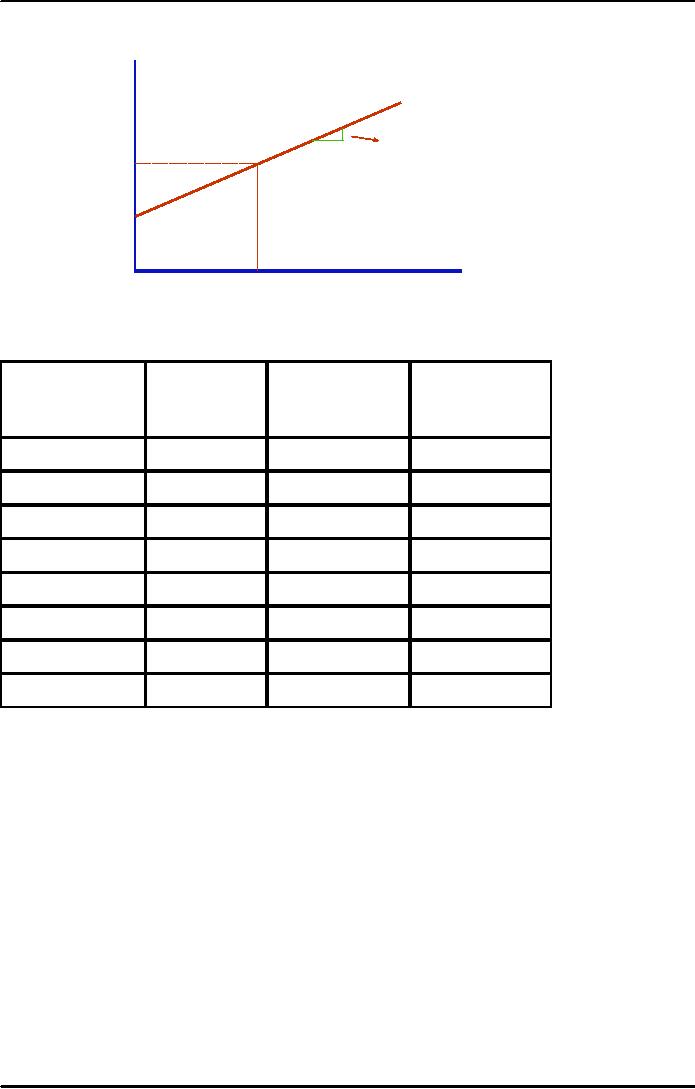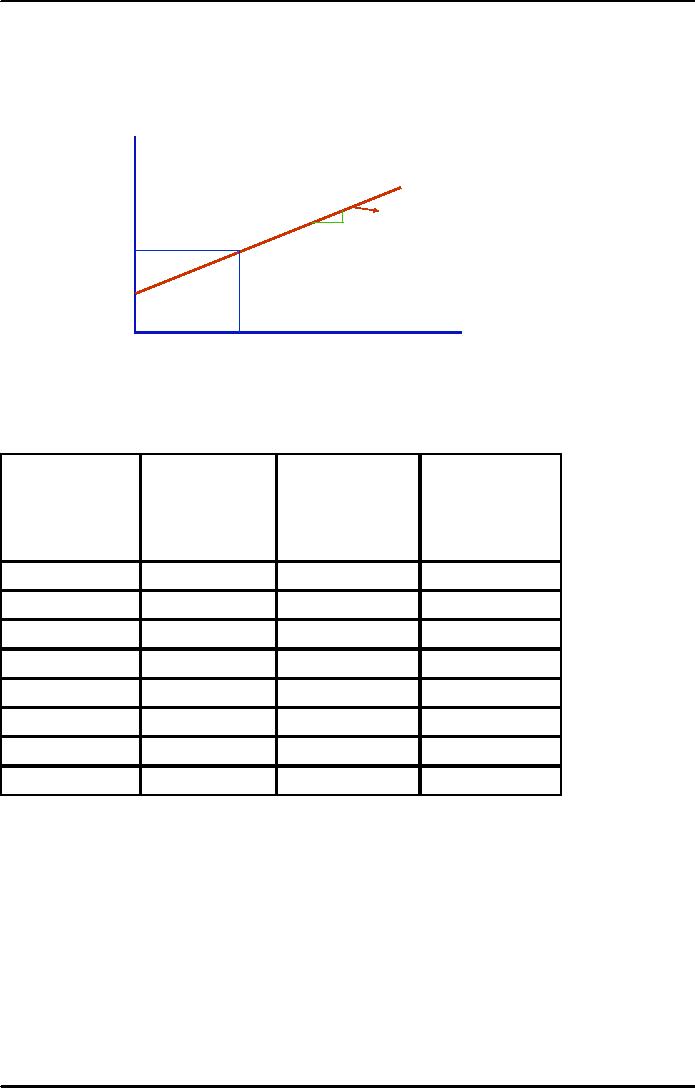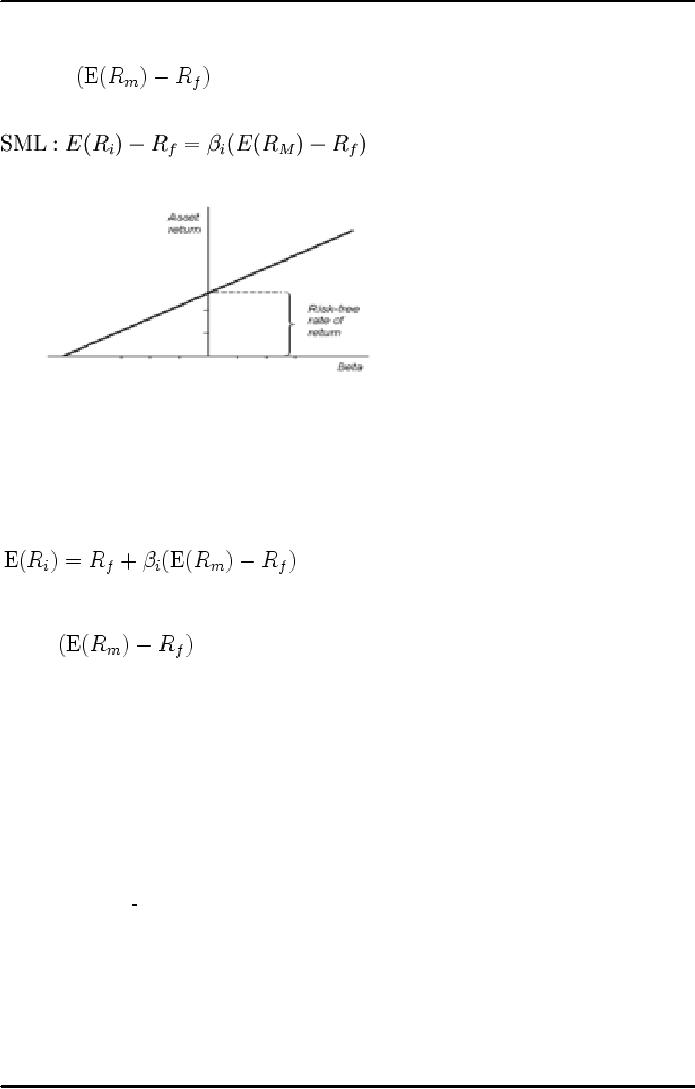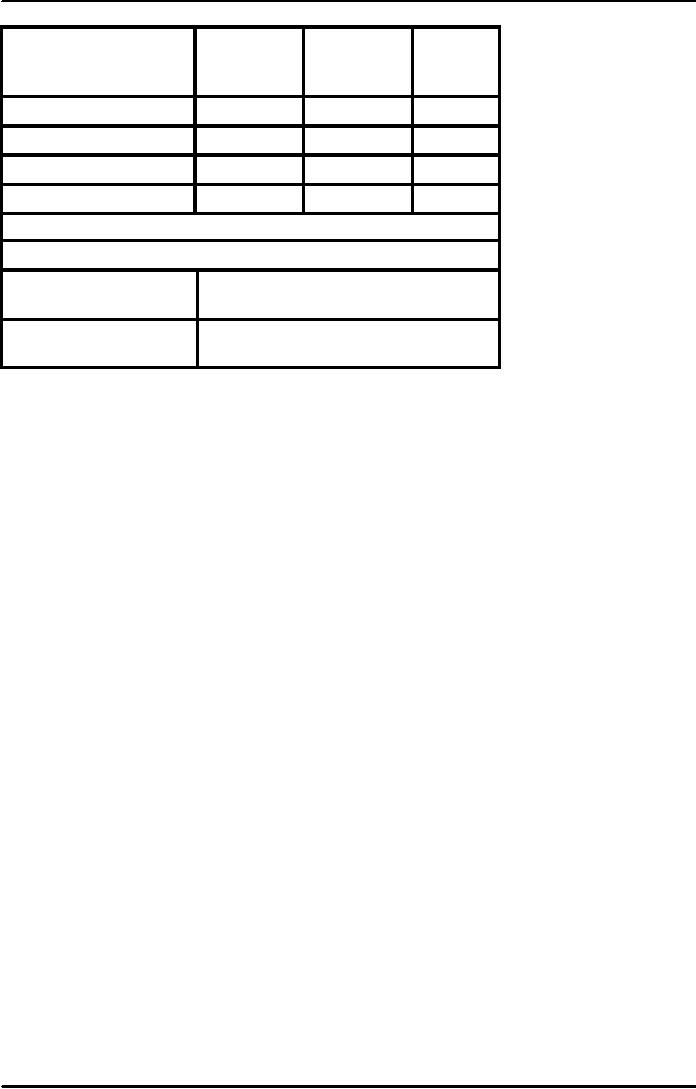 |

Corporate
Finance FIN 622
VU
Lesson
17
SECURITIES
MARKET LINE & CAPITAL ASSET
PRICING MODEL
CAPM
The
following topics will be
discussed in this lecture.
Security
Market Line
Capital
Asset Pricing Model
CAPM
Calculating
Over/Under valued
stocks
SECURITIES
MARKET LINE:
The
security market line tells
us how risk is rewarded in the market.
Let's assume that expected
return (Er)
on any
asset is Erm is 18% and beta
of 1.5 and risk free rate
(Rf) is 8%. Please note a risk free
asset has a
beta
of zero because it has no
systematic risk.
Going
forward, we create a portfolio comprising
of an Asset A and risk free
asset. We calculate
expected
return
on portfolio by changing the investment level in
both assets. For example, if
30% of the investment
is
made in asset A, the expected
return will be
E(r) =
%a x E(r) A + %b x Rf
E(r) =
30% x 18% + (1 - 0.30) x 8%
= 5.40
+ 6 = 11.40%
And
the beta of this portfolio can be
computed as:
Bp = 30% x Ba + 70%
x Bb
Bp =
0.30 x 1.50 + 70% x 0 (since risk-free
asset has zero
beta)
Bp =
0.45 + 0 = 0.45
Now
you can think that
can we increase our investment in
stock A beyond 100% level. This can be
done by
if the investor
borrows at risk free rate. Assuming
that investment in stock A is increased
to 150% and this
would
imply that investment in risk free
asset has been reduced by
50% in order to keep investment at
100%
level.
The
expected return on this portfolio
will be:
Er (p) =
1.50 x 18% + -0.50 x 8%
= 27 % - 4% =
23%
The
portfolio beta will
be:
B (p) =
1.5 x 150% + (100 -150) x
0
= 2.25
+ 0 = 2.25
Now we
can work out different
investment possibilities by changing the portion of
amount invested in asset
A.
Also, we plot these values
to draw a graph.
54

Corporate
Finance FIN 622
VU
Portfolio
Expected Return
Investment in
A
Y
ERa
Rf/ Beta
ERa
18%
Slope =
6.67
Rf=8%
X
0
1.50
Portfolio
Beta
%
OF
PORTFOLIO
INVESTMENT
PORTFOLIO
PORTFOLIO
IN
STOCK A
ER
BETA
CURVE
SLOPE
8
0
8.00
-
-
25
10.50
0.3750
6.67
50
13.00
0.7500
6.67
75
15.50
1.1250
6.67
100
18.00
1.5000
6.67
125
20.50
1.8750
6.67
150
23.00
2.2500
6.67
Reward
to Risk = (ER a - ER rf) / BETA
a
=
0.0666667 or 6.67
The
graph and table tell us
something clearly that slop
of the curve returns a constant
value at all investment
levels.
The slop of curve is just
the risk premium on assets A divided by
Asset A's beta
Ba.
Slope
of curve = Era Rf / Ba (18
8)/1.5 = 6.667
The
fourth column in the table uses this
formula to calculate the
slop.
Now we
advance our example and
consider another asset B, offering
expected return of 14% and a
beta of
1.10.
The Rf is the same i.e.,
8%.
Assuming
that we invest 30% in asset B and
rest in risk free asset.
Then portfolio return can be
calculated
the
way we did above.
That
is
Erp =
.30 x 14% + (1 - .30) x 8%
= 4.2
+ 5.6 = 9.80%
Portfolio
beta is
55

Corporate
Finance FIN 622
VU
Bp =
.30 x 1.10 + .70 x 0
=
0.33
Like
asset A, we can work out
different investment combination and a
graph as under:
Portfolio
Expected Return
Investment in
B
Y
ERa Rf/
Beta
ERa
14%
Slope=
5.45
Rf=8%
X
0
1.10
Portfolio
Beta
%
OF
PORTFOLIO
PORTFOLIO
PORTFOLIO
CURVE
SLOPE
INVESTMENT
ER
BETA
IN
STOCK A
8
0
8.00
-
-
25
9.50
0.28
5.45
50
11.00
0.55
5.45
75
12.50
0.83
5.45
100
14.00
1.10
5.45
125
15.50
1.38
5.45
150
17.00
1.65
5.45
Reward
to Risk = (ER a - ER rf) / BETA
a
=
5.45
The
risk to reward ratio of 5.45% is returned
by the stock B and is less
than the return offered by
stock A.
It is
clear from the example that
stock A is offering more
returns than stock B. In a
well organized market
this situation
will not persist for a
long period of time. This is
because more investors will
invest in stock A
and at
the same time investment in stock B will
reduce. This situation will
push up the price of stock
A
resulting in
reduction in returns of this stock.
The prices of stock B will
reduce thereby increase the
returns.
This
situation will continue till the point
when the prices of both assets
are same. Thus in an
efficient
market
the slope of both assets
will be the same.
Era
Rf/Ba = Erb
Rf/Bb
Moving
towards the conclusions that
regardless of number of assets available
in the market, the
reward to
risk ratio
must the same for
all the stocks available in
the market.
56

Corporate
Finance FIN 622
VU
The
relationship between Beta & required
return is plotted on the securities
market line (SML)
which
shows
expected return as a function of
β. The
intercept is the risk-free rate available
for the market, while
. The
Securities market line can
be regarded as representing a
single-factor
the
slope is
model of the
asset price, where Beta is
exposure to changes in value of the
Market. The equation of the
SML is
thus:
The
Security Market Line
CAPITAL
ASSET PRICING
MODEL:
The
asset return depends on the amount paid
for the asset today. The
price paid must ensure that
the
market
portfolio's risk / return characteristics
improve when the asset is
added to it. The CAPM is a
model
which
derives the theoretical required return
(i.e. discount rate) for an
asset in a market, given the
risk-free
rate
available to investors and the risk of
the market as a whole.
The
CAPM is usually
expressed:
·
β,
Beta, is the measure of asset sensitivity
to a movement in the overall market; Beta
is usually
found
via regression on historical data. Betas
exceeding one signify more
than average "riskiness";
betas
below
one indicate lower than
average.
·
is the
market premium, the historically observed
excess return of the
market
over
the risk-free rate.
Once
the expected return, E(ri), is
calculated using CAPM, the
future cash flows of the
asset can be
discounted
to their present value using
this rate to establish the correct
price for the asset. (Here
again, the
theory
accepts in its assumptions that a
parameter based on past data can be
combined with a future
expectation.)
A more
risky stock will have a higher
beta and will be discounted
at a higher rate; less sensitive
stocks will
have
lower betas and be
discounted at a lower rate. In theory, an
asset is correctly priced when its
observed
price
is the same as its value
calculated using the CAPM derived
discount rate. If the observed price
is
higher
than the valuation, then the
asset is overvalued; it is undervalued for a
too low price.
Summarizing
this
discussion we can say that
CAPM tell us:
Time
value of money: risk free
rate "Rf" is a rate when you
don't take risk. it is just
waiting
for
money.
Reward
for risk: the equation "Erm Rf"
represents reward for taking
average systematic
risk in
addition to waiting.
Systematic
risk: is measured by beta. This measure
the systematic risk present in an
assets
or
portfolio, relative to average
asset.
Calculating
Over/Under Valued
Stocks
An
asset is said to be overvalued if its
price is much higher given its
expected return and risk. On the
other
hand,
an asset is said to be undervalued if its
price is much lower given
its Er and risk.
57

Corporate
Finance FIN 622
VU
Risk
to
Reward
STOCK
ER
BETA
Ratio
ABC
15
1.5
5.33
XYZ
11
0.9
4.44
Risk
Free Rate
7
SLOPE
OF SML:
ERa
Rf/ Beta
ABC
5.33
XYZ
4.44
Consider
the above example where we
have two assets and
their expected return and
beta is given. We also
calculate
the risk-to-reward ratio assuming the risk
free rate of 7%.
We can
conclude that XYZ offers an insufficient
expected return given its level of risk
relative to ABC. This
is
because former's expected returns
are very low and its
price is high. Therefore, XYZ is
overvalued
relative to
ABC. In efficient market the
price of this stock will
fall. On the same we can say
that ABC is
undervalued
stock and its price
will rise.
58
Table of Contents:
- INTRODUCTION TO SUBJECT
- COMPARISON OF FINANCIAL STATEMENTS
- TIME VALUE OF MONEY
- Discounted Cash Flow, Effective Annual Interest Bond Valuation - introduction
- Features of Bond, Coupon Interest, Face value, Coupon rate, Duration or maturity date
- TERM STRUCTURE OF INTEREST RATES
- COMMON STOCK VALUATION
- Capital Budgeting Definition and Process
- METHODS OF PROJECT EVALUATIONS, Net present value, Weighted Average Cost of Capital
- METHODS OF PROJECT EVALUATIONS 2
- METHODS OF PROJECT EVALUATIONS 3
- ADVANCE EVALUATION METHODS: Sensitivity analysis, Profitability analysis, Break even accounting, Break even - economic
- Economic Break Even, Operating Leverage, Capital Rationing, Hard & Soft Rationing, Single & Multi Period Rationing
- Single period, Multi-period capital rationing, Linear programming
- Risk and Uncertainty, Measuring risk, Variability of return–Historical Return, Variance of return, Standard Deviation
- Portfolio and Diversification, Portfolio and Variance, Risk–Systematic & Unsystematic, Beta – Measure of systematic risk, Aggressive & defensive stocks
- Security Market Line, Capital Asset Pricing Model – CAPM Calculating Over, Under valued stocks
- Cost of Capital & Capital Structure, Components of Capital, Cost of Equity, Estimating g or growth rate, Dividend growth model, Cost of Debt, Bonds, Cost of Preferred Stocks
- Venture Capital, Cost of Debt & Bond, Weighted average cost of debt, Tax and cost of debt, Cost of Loans & Leases, Overall cost of capital – WACC, WACC & Capital Budgeting
- When to use WACC, Pure Play, Capital Structure and Financial Leverage
- Home made leverage, Modigliani & Miller Model, How WACC remains constant, Business & Financial Risk, M & M model with taxes
- Problems associated with high gearing, Bankruptcy costs, Optimal capital structure, Dividend policy
- Dividend and value of firm, Dividend relevance, Residual dividend policy, Financial planning process and control
- Budgeting process, Purpose, functions of budgets, Cash budgets–Preparation & interpretation
- Cash flow statement Direct method Indirect method, Working capital management, Cash and operating cycle
- Working capital management, Risk, Profitability and Liquidity - Working capital policies, Conservative, Aggressive, Moderate
- Classification of working capital, Current Assets Financing – Hedging approach, Short term Vs long term financing
- Overtrading – Indications & remedies, Cash management, Motives for Cash holding, Cash flow problems and remedies, Investing surplus cash
- Miller-Orr Model of cash management, Inventory management, Inventory costs, Economic order quantity, Reorder level, Discounts and EOQ
- Inventory cost – Stock out cost, Economic Order Point, Just in time (JIT), Debtors Management, Credit Control Policy
- Cash discounts, Cost of discount, Shortening average collection period, Credit instrument, Analyzing credit policy, Revenue effect, Cost effect, Cost of debt o Probability of default
- Effects of discounts–Not effecting volume, Extension of credit, Factoring, Management of creditors, Mergers & Acquisitions
- Synergies, Types of mergers, Why mergers fail, Merger process, Acquisition consideration
- Acquisition Consideration, Valuation of shares
- Assets Based Share Valuations, Hybrid Valuation methods, Procedure for public, private takeover
- Corporate Restructuring, Divestment, Purpose of divestment, Buyouts, Types of buyouts, Financial distress
- Sources of financial distress, Effects of financial distress, Reorganization
- Currency Risks, Transaction exposure, Translation exposure, Economic exposure
- Future payment situation – hedging, Currency futures – features, CF – future payment in FCY
- CF–future receipt in FCY, Forward contract vs. currency futures, Interest rate risk, Hedging against interest rate, Forward rate agreements, Decision rule
- Interest rate future, Prices in futures, Hedging–short term interest rate (STIR), Scenario–Borrowing in ST and risk of rising interest, Scenario–deposit and risk of lowering interest rates on deposits, Options and Swaps, Features of opti
- FOREIGN EXCHANGE MARKET’S OPTIONS
- Calculating financial benefit–Interest rate Option, Interest rate caps and floor, Swaps, Interest rate swaps, Currency swaps
- Exchange rate determination, Purchasing power parity theory, PPP model, International fisher effect, Exchange rate system, Fixed, Floating
- FOREIGN INVESTMENT: Motives, International operations, Export, Branch, Subsidiary, Joint venture, Licensing agreements, Political risk